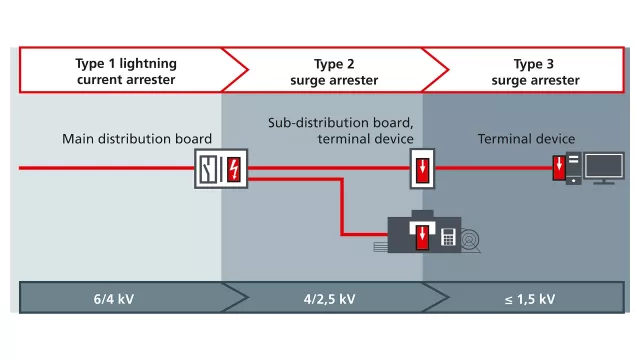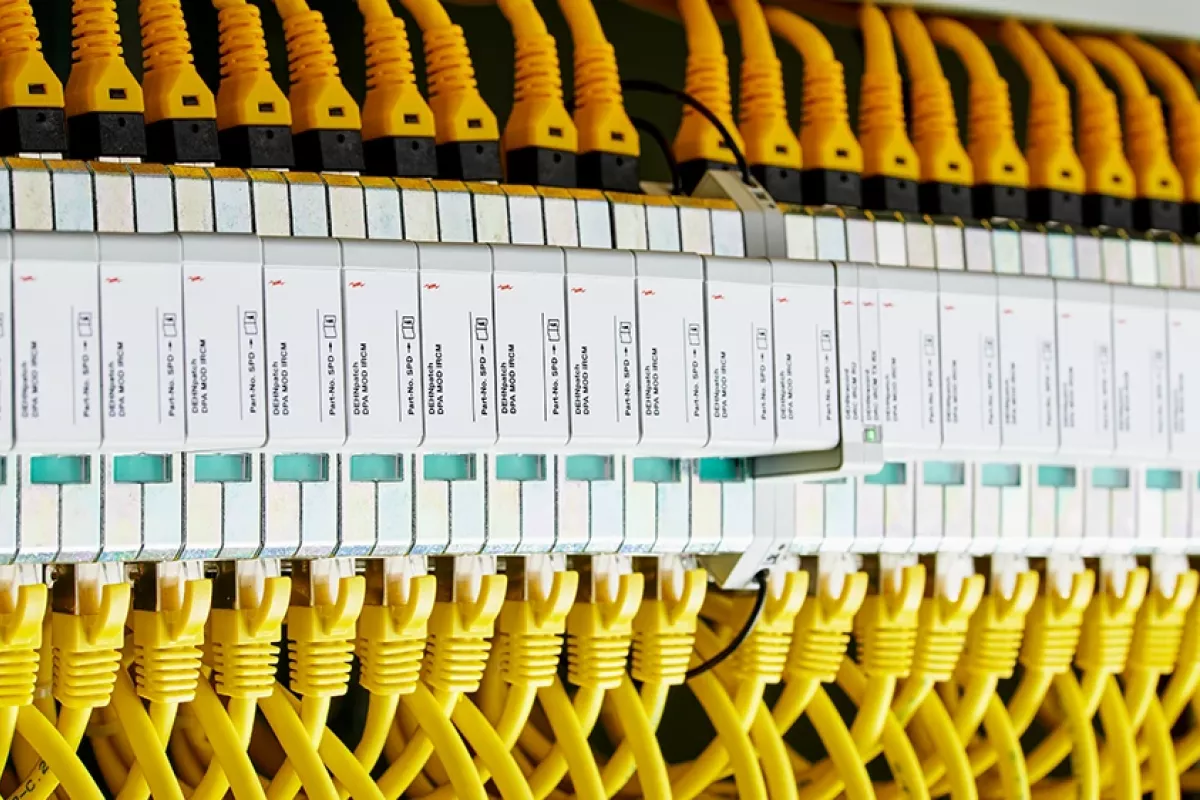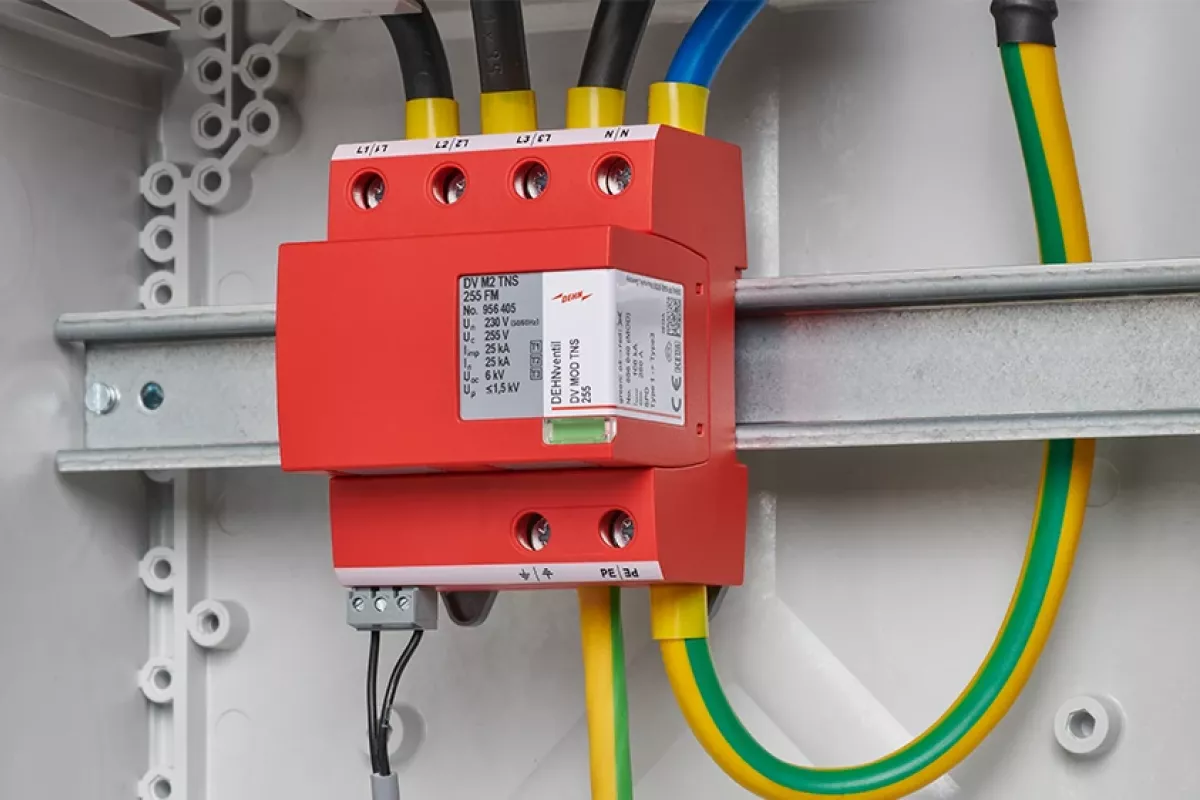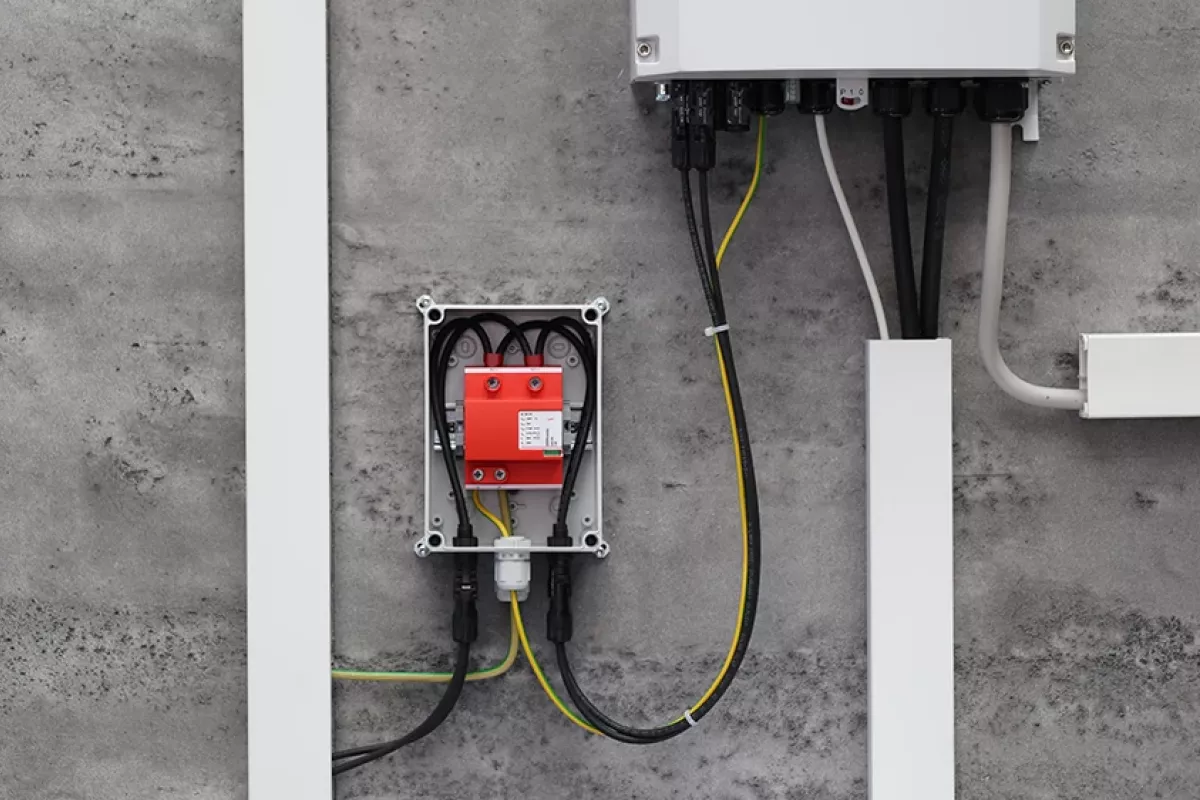Surge protection for industrial buildings
Surge protection protects electrical and electronic systems and devices from damage caused by excessive voltages – from measurement and control technology to security, data and communication technology. Dangerous interference energy is gradually reduced to a level corresponding to the rated impulse withstand voltage.
Please note: for an effective surge protection concept, it is important to ensure that the three-stage protection principle is observed. Interaction of the individual protection stages ensures the best possible protective effect. To this end, the relevant arresters must be matched together (i.e. energy-coordinated) according to IEC 60364-5-53.
How to plan surge protection
Lightning equipotential bonding plays a particularly important role in buildings with an external lightning protection system. Lightning equipotential bonding must be designed for all conductive systems running from the outside into the building as per IEC 62305-3. In addition, during planning you should consider an EMC-based lightning protection zone concept according to IEC 62305-4 for the protection of sensitive components.
Surge protection devices are divided into lightning current arresters, surge arresters and combined arresters. Lightning current arresters and combined lightning current and surge arresters establishing the transition from lightning protection zone 0A to 1 or 0A to 2 are subject to the strictest requirements with regard to discharge capacity.
These arresters must be capable of carrying partial lightning currents of the 10/350 μs waveform in a non-destructive manner in order to prevent destructive partial lightning currents from entering the electrical system of a building.
At the transition from lightning protection zone 0B to 1 (or downstream of the lightning current arrester at the transition from lightning protection zones 1 to 2 and higher), surge arresters are used to protect against overvoltages. Their task is to further attenuate the residual energy of the upstream protection stages as well as to limit the overvoltages induced in the system or generated there itself.

Three-stage protection principle
In addition to taking into account the different lightning protection zones, an effective surge protection concept is also based on the three-stage protection method, in which the penetrating energy is gradually reduced to a low level that is safe for terminal equipment:
- Stage 1 includes Type 1 lightning current arresters or combined arresters at the building entrance (lightning equipotential bonding).
- Stage 2 involves Type 2 surge arresters usually installed in the downstream sub-distribution boards.
- Stage 3 includes Type 3 surge arresters, which can be installed directly at the terminal device or in socket outlets.
Interaction of the individual protection stages ensures the best possible protective effect. To this end, the relevant arresters must be matched together (i.e. energy-coordinated) according to IEC 60364-5-53.
Downloads
Industrial building
Safety for modern buildings
DEHN protects technical building equipment
More safety in the switchgear cabinet
Lightning and surge protection for electric mobility
Surge protection for outdoor LED lighting
The right solutions

DEHNpatch
The DEHNpatch surge arrester protects the latest generation of Ethernet applications up to 10 GBit/s and 4PPoE. This secures the flow of data even after surges or lightning strikes.

DEHNventil M2
This arrester protects against transient overvoltages and creates space for future requirements. DEHNventil M2 ensures the availability of systems and thus ensures smooth processes in modern, networked industrial plants.

DEHNcube 2 YPV
The prewired system solution DEHNcube 2 YPV provides safety to the PV system. The generator junction box is available for 1 MPP, 2 MPP and 3 MPP applications, as well as commonly used inverter types.

